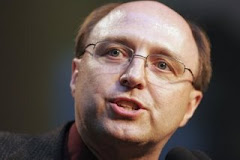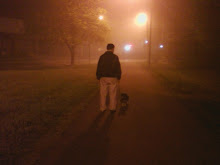Acts 3
Acts 3:1-11: We have just had a picture of the inner life of the Jesus community in Jerusalem. Now we will get a picture of its outreach. Peter and John (only Luke pairs these two in this way) are going to the Temple to pray. The early Christians who were also Jewish continued to participate in the religious life of their Jewish community. In telling this story, Luke would have us recall the healing stories about Jesus. The Spirit that empowers the Jesus community makes possible acts of healing and restoration like those performed by Jesus. For some contemporary Christians, the focus remains on physical healing, and while there are legitimate stories of physical healing which seem to arise from unexplained sources, the point in Luke’s gospel is less on the physical healing itself than on God’s power to heal and restore at work through the Jesus community. In our day when we have modern medicine to care for many of our physical ailments, there are perhaps other kinds of healing and restoration that are urgently needed. Sometimes our attitudes cripple us, attitudes that we have had almost since birth. Sometimes what cripples us are our inabilities to reach across socially constructed dividing lines.
Anyway, Peter and John are approached by a man lame since birth, and asked to give alms. Rather than give him money, they heal him in the name of “Jesus Christ of Nazareth.” Having his legs and ankles strengthened, the man now healed leaps for joy – a wonderful poetic coupling of images. This man goes from a beggar who needs to be carried to one walking and leaping and praising God. People are filled with wonder and amazement, much as they were when deeds of power were performed by Jesus.
Acts 3:12-26: This act of power is now given interpretation in Peter’s second sermon. The sermons in Acts are comprised of phrases and ideas from a variety of early Christian sources, and Luke uses them as summary statements of the teaching and preaching of the first Christians. As with many of the incidents in the gospels, deeds of power are followed by teaching. As with Peter’s first sermon, the immediate event is interpreted leading to a broader presentation of the good news of the gospel.
What has happened has happened because of God, not because of Peter and John. The God who has acted here is the God of Abraham, Isaac, and Jacob. There is no “new god” at work here. But this God has acted in a similar way in Jesus – the same Jesus who was handed over to be crucified by the Roman authorities. Again, Luke paints with a broad brush as he assigns responsibility for the death of Jesus. We need to be cautious about doing such things, given the ugly history of Christian anti-Semitism. It is faith in Jesus which has released to power of God’s Spirit to heal the lame man.
Luke, through Peter’s words, offers the notion that ignorance played a role in the death of Jesus. People failed to understand who he really was, but they cannot avoid forever the need to make some decision about him. Luke is the only New Testament author who pairs “suffering” with ‘Messiah.” Again, we need to remember, the Christian community looked to their Scriptures, the Hebrew Scriptures, to try and understand the meaning of Jesus death. Luke found Scriptures about suffering and God’s people to make statements about a “suffering Messiah.” The point is less interpretation of the Hebrew Scriptures than making the point that God was at work in Jesus and all are invited to join that work. “Repent” is the invitation. As Marcus Borg notes in his book Jesus, to repent means to turn around, to return. It carries with it the connotation of the Hebrew Scripture stories of exile and return. To repent also means “to see again, to go beyond the mind that is the product of convention, to acquire a new mind, a new way of seeing” (219-220). Peter invites persons to repent, to turn toward God. By doing so, sin is forgiven, that is, all those things that separate one from God are taken away. One’s lame places are healed. Luke, through Peter, offers even more poetic and metaphoric language for what this turning may bring – “times of refreshing.” This harkens back to those passages in the Hebrew prophets where God’s ultimate activity is portrayed as a restoration of all creation. This is more than personal salvation. We are invited to be a part of God’s dream for the world. Don’t miss this opportunity.
Acts 4
Acts 4:1-22: Just as Jesus got into trouble with the authorities for his teaching and activity, so, too, would Jesus’ followers. Peter and John are arrested and imprisoned. Yet Luke notes that in spite of this, many believed their testimony and became part of the Jesus movement – about 5,000 (an echo of the feeding story in the gospel). Peter and John are questioned about the authority they have for their teaching and work.
Peter responds, filled with the Holy Spirit. There is irony in his words – are we being questioned because of a good deed? Have we been arrested and imprisoned because someone who was sick has been healed, has been made well, made whole? He goes on to say that this person’s state of well-being should be attributed to Jesus Christ of Nazareth. Peter’s speech again rehearses the story – this Jesus was crucified by the authorities, but God raised him up, vindicated him.
Verse 12 poses all kinds of interesting questions. Is it proof of Christian exclusivism, proof that only Christians can find a right relationship with God? Many have read it that way, but is this the best reading of the text. In its context, this is a statement about the power that healed the lame man, and is more a statement about there really only being one power for healing in the world, the power of God which Christians know to have been at work through Jesus. This is our essential testimony of faith, we know God – God’s love and God’s power, in Jesus. That does not preclude that God’s love and power may touch people who would not proclaim faith in Jesus. From Luke’s theology, as well as the New Testament as a whole, the modern reader may be clear with regard to two points: (a) Christians are not encouraged to believe that the Christian way is only one of “the many roads to God; (b) but neither are Christians encouraged to believe that only confessing Christians are finally accepted by God…. Christians should confess their faith that the God revealed in Christ is the only Savior, without claiming that only those who respond in faith will be saved. (People’s New Testament Commentary). Not all Christians would agree with this way of putting the issue, but it is worth further consideration. Such a position allows one to share one’s own faith experience without assuming that if the listener doesn’t respond, the person is outside of God’s grace. This position allows us to listen attentively to the wisdom of other traditions. In her new book Welcome to the Wisdom of the World, Joan Chittister writes, “Every major spiritual tradition brings a special gift to the art of living the spiritual life.” For those interested in further exploration of the issue of Christianity and other religions I would recommend Marjorie Suchocki’s Divinity and Diversity and Schubert Ogden’s Is There Only One True Religion or Are There Many?
Those Jewish leaders on the Council were amazed at the boldness and eloquence of Peter and John – both lacked rabbinical and rhetorical training yet spoke powerfully. The council discusses the matter in private. They acknowledge that God is up to something but somehow want to keep it contained. Do we ever want to do that? The Council warns them not to continue speaking as they have, but Peter and John refuse. They cannot not tell their story. Our faith should be so contagious.
Acts 4:22-31: Peter and John return to their friends in the Jesus community and they pray together. This prayer give Luke another opportunity to summarize the Christian message of faith. It also provides insight into Luke’s understanding of the mission of the church. In the prayer both Jewish and Gentile leaders are viewed as responsible for the death of Jesus. The same forces that arrayed themselves against Jesus remain lined up against the church, so they pray that they may not loose faith and courage but may continue their work. The work of the church extends the work of Jesus – teaching, healing, signs and wonders (and what could be a more significant sign and a greater wonder than changed lives). So that they may, in fact, continue the work of Jesus, the Spirit of God, the Spirit of Jesus, is again powerfully present.
Acts 4:32-37: Luke now inserts another description of the life of the Christian community. Again, the picture is idealistic. As we read the rest of the New Testament we will see that these early Christians were not always of one heart or one mind, and did not always share their goods with one another. Nevertheless, the Spirit of God not only changed individual lives, but was forming a new kind of community, one that sought unity and sharing. That work of the Spirit continues. How might God be at work in our lives trying to knit us together so that in a real way we are of one heart and soul? How can we be people of generous sharing? The kind of sharing portrayed here was also found among a few other groups both within Judaism and within the Roman culture. From out of this community life, the apostles continued to provide their testimony about what God had done in Jesus. “Great grace was upon them all.” May it be so with us.
Subscribe to:
Post Comments (Atom)


No comments:
Post a Comment